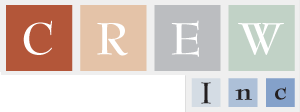Mold Facts
What is mold and where is it found?
Mold (fungi) is present everywhere – indoors and outdoors. There are more than 100,000 species of mold. At least 1,000 species of mold are common in the U.S. Some of the most commonly found are species of Cladosporium, Penicillium, and Aspergillus. Mold is most likely to grow where there is water or dampness – such as in bathrooms and basements.
How can you be exposed to mold?
When moldy material becomes damaged or disturbed, spores (reproductive bodies similar to seeds) can be released into the air. Exposure can occur if people inhale the spores, directly handle moldy materials, or accidentally ingest it. Also, mold can sometimes produce chemicals called mycotoxins. Mycotoxins may cause illness in people who are sensitive to them or if they are exposed to large amounts in the air. Large exposures are typically associated with certain occupations (e.g., agricultural work).
How does mold grow?
All molds need water to grow. Mold can grow almost anywhere there is water damage, high humidity, or dampness. Most often molds are confined to areas near the source of water. Removing the source of moisture – such as through repairs or dehumidification – is critical to preventing mold growth.
What should you do if mold is present in your home or apartment?
Although any visible mold can be sampled by an environmental consultant and/or analyzed by a laboratory specializing in microbiology, these tests can be very expensive – from hundreds to thousands of dollars. There is no simple and cheap way to sample the air in your home to find out what types of mold are present and whether they are airborne. Even if you have your home tested, it is difficult to say at what levels health effects would occur. It is more important get rid of the mold rather than find out more about it.The most effective way to treat mold is to correct underlying water damage and have the area cleaned by a certified Antimicrobial Remediation Technician.
How should mold be cleaned?
Mold should be cleaned as soon as it appears. Persons cleaning mold should be free of symptoms and allergies. Only SMALL areas of mold should be cleaned using a 90% Water 10% Bleach solution. Gloves should be worn during cleaning. This solution should be wiped (NOT SPRAYED) onto the surface. Disposable towels should be used, one pass per towel. Bag the used towels tightly and dispose of them outside. The cleaned area should then be thoroughly dried. Keep in mind, this only kills the “top” of the mold. Like a plant, the mold has roots, called “hyphe”, and this does not kill what is below the surface.
If the mold returns quickly or spreads, it may indicate an underlying problem such as a leak or humidity problem. Any underlying water problems must be fixed to successfully eliminate mold problems. If mold contamination is extensive, a professional abatement company may need to be consulted.

